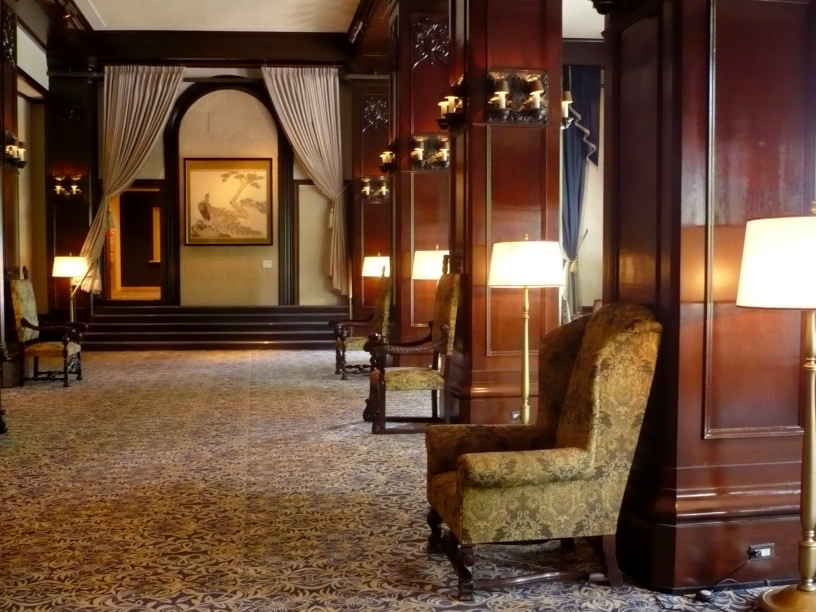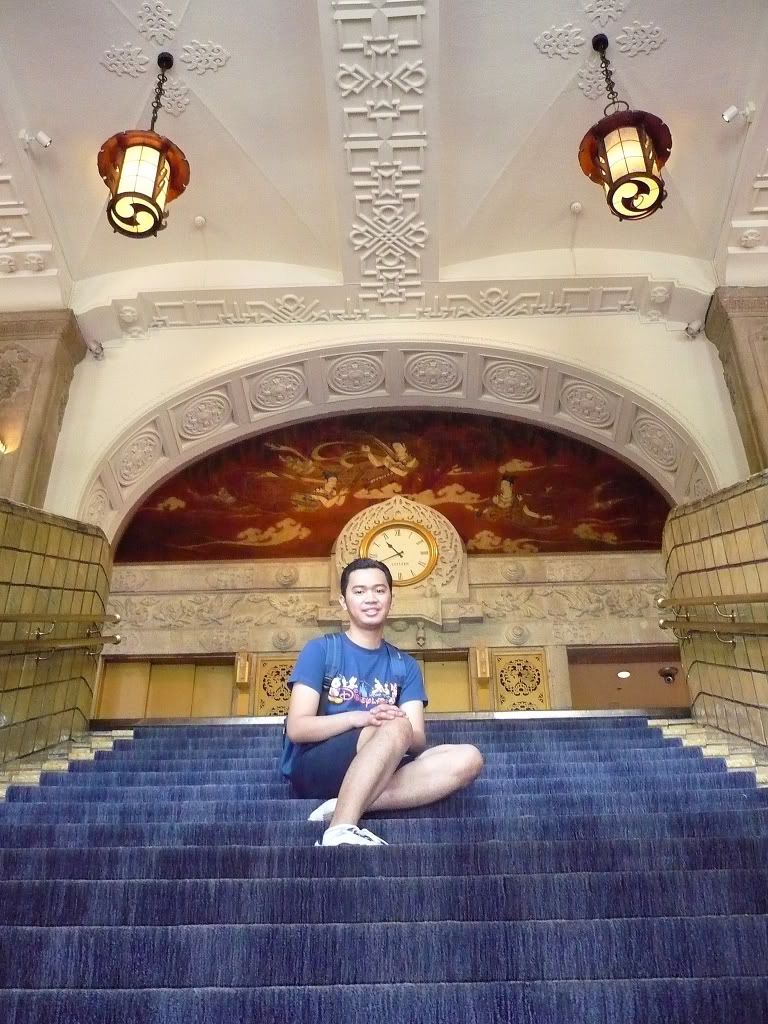Yokohama, Japan
June 27, 2009
I survived Tokyo. Its crowds, its convoluted metro lines, its punishing summer heat. “There’s got to be a morning after,” went the cheesiest song ever from a disaster movie. After a full day traversing Tokyo, I found that perfect morning after in Yokohama. Not that the day, or night, before was a disaster. It was just the most gruelling city tour I had ever done.
I just learned that Yokohama was Japan’s second largest city; I had always thought Osaka held that place. Perhaps Yokohama was not as high-profile as Osaka because it was an incorporated city, i.e. a part of the Greater Tokyo Area, a contiguous urban sprawl, and only 30 minutes away by train. Its claim to fame was its coast of Tokyo Bay.
But where had all the people gone, 3.6 million of them? Emerging from the JR station, I was surprised to see – almost no one! A stark contrast to Tokyo’s hustle and bustle. Queen’s Square (a commercial and residential condo-complex) was practically deserted. The floor still had an unsullied sheen.
Just outside the station, Cosmo Clock 21, the world’s erstwhile largest Ferris wheel (back in 1989), towered over what seemed to be an abandoned amusement park. It may just have been too early in the morning. This part of Yokohama had that small-town vibe. I felt relieved to have some solitude after being a drop in the surge of humanity in Tokyo and Kawasaki.


Still staggering from the previous day’s walking tour, we ambled towards the Landmark Tower, Japan’s tallest building at 70-storey high. It had all the appeal of a dull-colored Lego pagoda.
Actually, it was designed to look exactly that way – tapering like a pagoda, not for its aesthetic or historical value, but for a more practical reason: pagodas could usually withstand earthquakes. The building was said to be tremblor-resistant. Yokohama had been levelled in 1923 by the Great Kanto Earthquake, so the design absolutely made sense.
My friend wanted to take us to the observation deck on the 69th floor for a view of Tokyo and the bay – and on a clear day such as this one – possibly, Mount Fuji. However, sore soles, morning lethargy, and the old-world charm of New Grand Hotel derailed our plans. A bladder break became the highlight of my “morning after” in Yokohama. We simply dropped in to use the restroom, but we ended up lingering in the lobby for about an hour and decided against going to the Landmark Tower.


The hotel may not be grand by today’s standards (at least the original building, the one fronting the bay; there was a modern high-rise annex built in the 1990s), but it was a functional relic of the city’s internationally flavored past.
The aforementioned earthquake became the catalyst for the establishment of this classic hotel. It spurred the idea of a hotel that would attract foreign investors to the devastated city. Thus, in 1927 the New Grand Hotel was born to house dignitaries, businessmen, and celebrities, through the years. It evoked the times and the likes of Charlie Chaplin and Mary Pickford.
A turn of the revolving door thrust me to the turn of the century – the 20th one. From the entrance, a ceramic-tiled grand staircase led to the second floor. That was its unique feature that time: the second-floor lobby. The hall was shrouded in attenuated light: lamp light by paper lampshades and natural light by heavy tie-back drapes that framed the huge cathedral windows.

Such old-world elegance conjured sounds and images of the swinging 20s: flappers and jazz music. But more concretely, the quiet lobby was redolent of history: the door through which Western influence made its entrance – twice. The Port of Yokohama, seen from the hotel’s lobby windows, was where American commodore Matthew Perry (not the Friends star!) ended Japan’s 200-year isolation, with canons and a handshake, in the 1850s.
A century later, General Douglas MacArthur would hold post in the hotel to manage post-war Japan. The hotel was one of the few structures spared by B-29 bombings, allegedly for this very purpose – to become a sort of HQ of American forces.
That was all for the better. Otherwise, such relics as old typewriters would not be on display. I saw one with a document, a banquet prospectus, dated July 3rd, 1926 still rolled on its platen. The paper even predated the hotel!


Across from the hotel lay Yamashita Park. Again, the aforementioned earthquake provided the rubble used to build a reclamation area that the park sat on. It had become a famous date place for Tokyoites. A Japanese friend of mine took his prospective girlfriends there for romantic evenings.
This reclaimed land – including the newly developed area of Queen’s Square and the Landmark Tower – came to be called Minato Mirai 21, literally “Harbor Future 21”. And the future it alluded to was laid-back and intimate, more conducive for PDA. It was unthinkable to swoon in urgent and frenetic Tokyo!
For all its romantic possibilities, Minato Mirai 21 seemed better visited in the evening – when the park sparkled with harbor lights which I had previously only seen in photos. But after that great earthquake and WW2 bombings, “there’s got to be a morning after” in Yokohama. And I gladly settled for my own rejuvenating morning after in it.
There were none of the dazzling lights of the future, just dim pockets of the past.
Thanks for reading! If you like my content, you may…






Hi, wonderful post. I just found your site and I’m already a fan. =D
Whoa, you made me blush! 🙂 Thanks!
waaaaa ha ha ha, same thing here when i visited tokyo aeons ago. good thing was that i had an office mate who was familliar with the metro system. i would have freaked out if it was just me! anyways, aside from looking like a japanese, i happen to look like a famous japanese actor of Ainu lineage. people kept talking to me in japanese. i just kept replying wakomasabe!
hint, that’s not a japanese term!
you’re hilarious, cacho! ainu ha. must be the chocomplexion and cascading hair. 😉 warinkomasabe. :p
oops wrong post…
Kon’nichiwa AJ! Watashi wa anata no posuto o aishite! Watashi wa, JR kōki-shin ekida…. Sore wa watashi no na ni chinande nazuke ka? HAHAHA!
Sayōnara! 😀
Translation: Hello AJ! I love your post! Okay,the rest has got to do with the JR station btw (I forgot!) Big flop big time! LOL… was it named after me? HAHAHA!
Thanks for the translation! I dunno why Google Translator didn’t work. Di kinaya ang Japanese spelling mo. Haha! Anyway, I don’t think the JR station was named after you. But I think JP (Japan) was; you’re Jorie Pacli after all. 😉